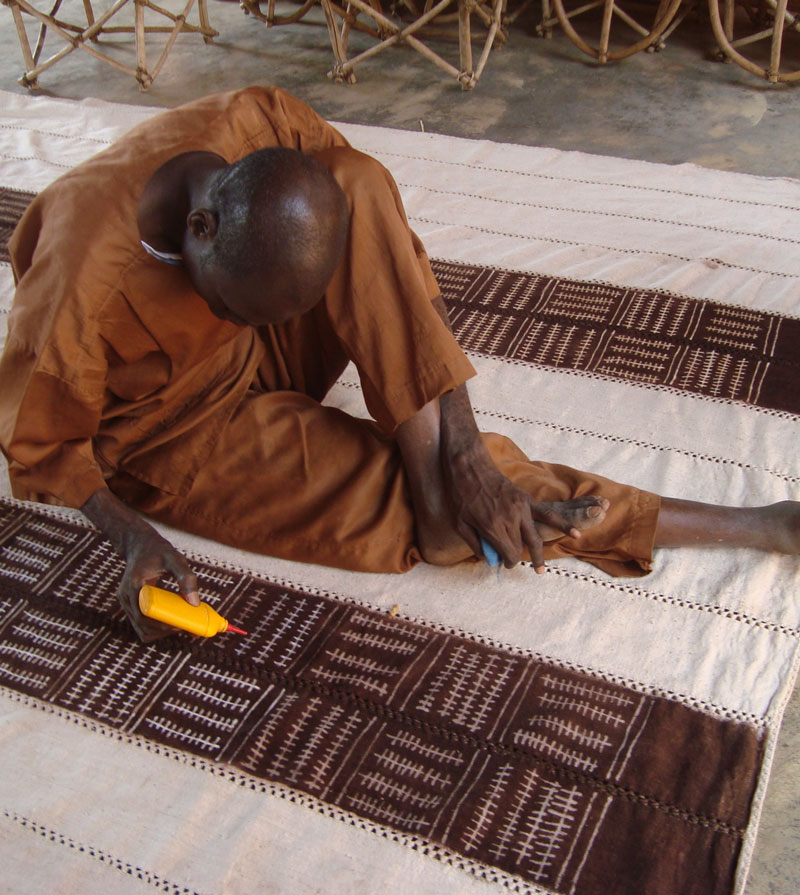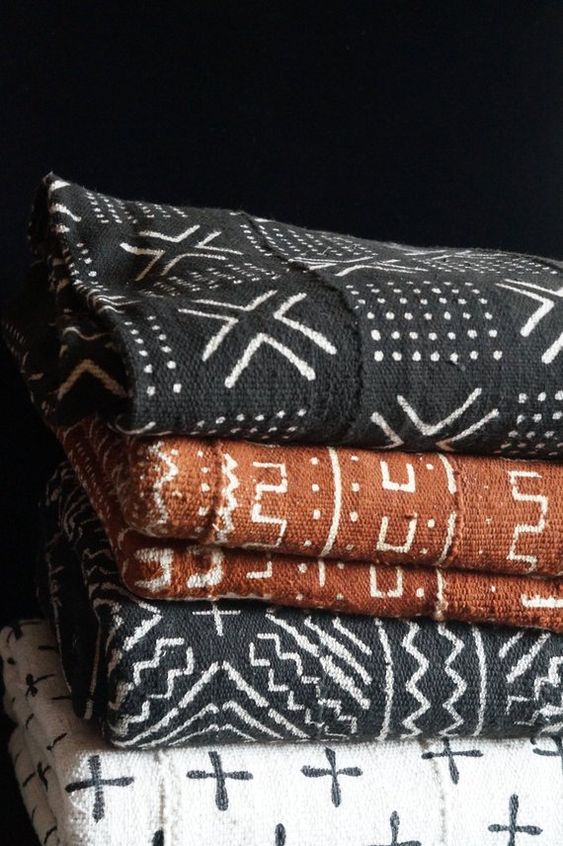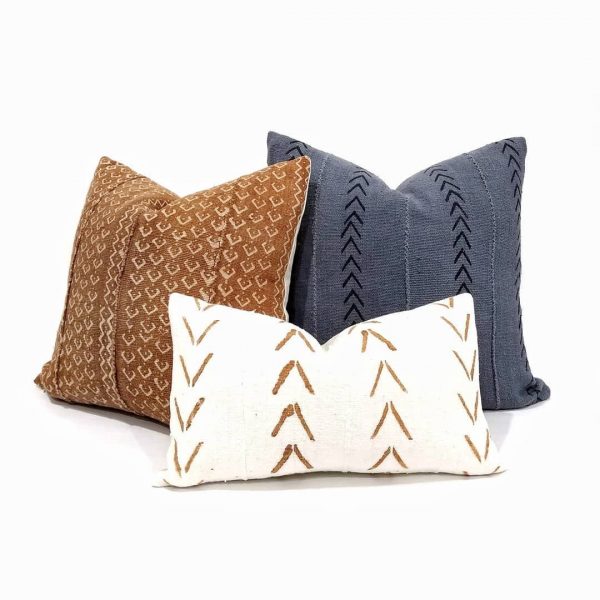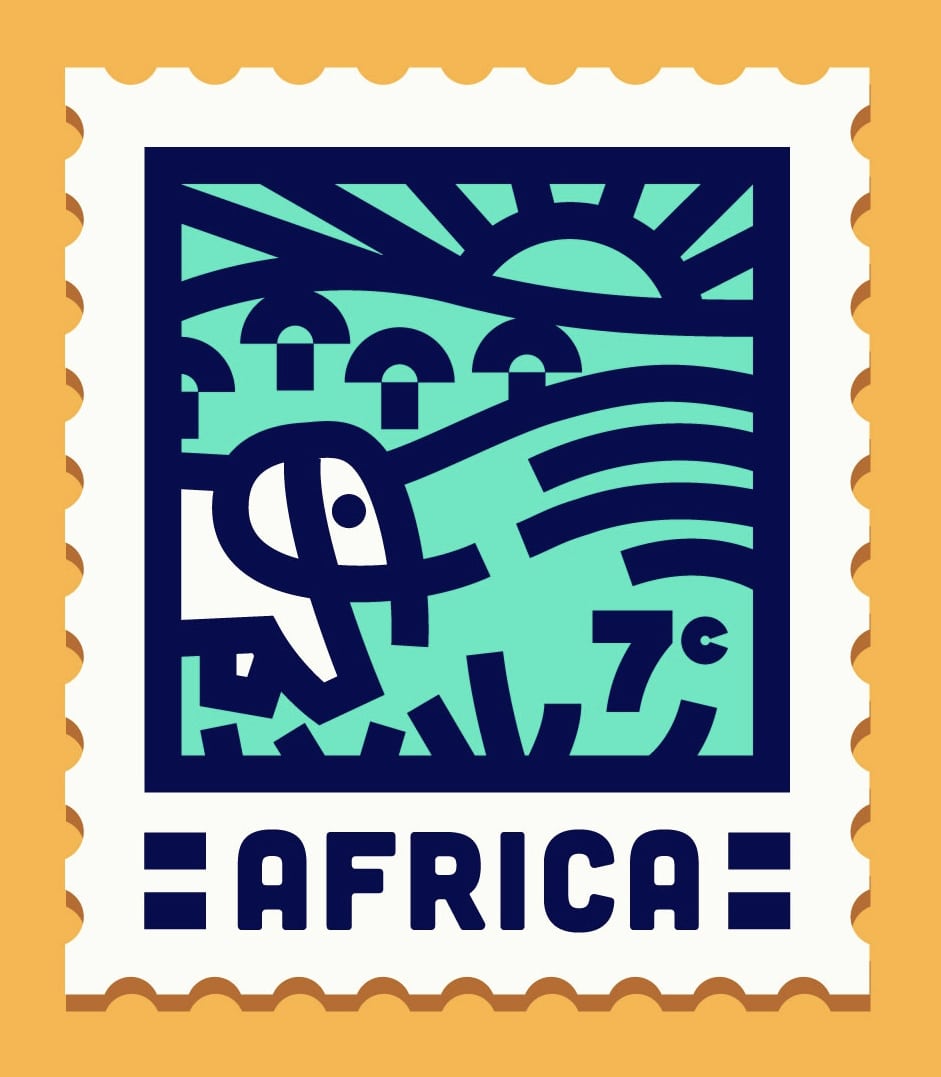The bogolan (-fini) comes from bogo means “clay” or “mud”, lan means “by means of” and –fini, meaning “cloth”. It is characterized by patterns representing scenes of rural or urban African life, or of the surrounding nature. Innumerable ideograms and geometric forms invest the decor, in natural colors, to decorate and personalize objects and fabrics. Thus, ochre, brown, yellow, black and white blend together and complement each other to offer infinite creative possibilities.
Bogolan, an ancestral heritage
It’s an ancient tradition, but it’s impossible to say how old it could be: its origins are unknown. Some scholars (as Luke-Boone, 2001) claim that it can be traced back to the 12th century AD, but this is an unverifiable hypothesis due to the perishable and fragile nature of the fabric. The ancestral art of making bogolan was developed by some Mandé people in West Africa: Bamana, Malinké, Dogon, Sénoufo, and Bobo-Oulé. The amazing fact is that the technique hasn’t changed since then. Today the mudcloth is still handmade in Mali and in some of its neighboring countries, like Burkina Faso, Guinea but the etymological roots are Bambara (the language spoken by the Bamana, an ethnic group of Mali).
Marketed locally in Mali in the 1970s, the production intensified in the 1980s with the emergence of production centers, such as in San or Ségou. This type of dyeing was also widely distributed around the world, thanks to the creations of designer Seydou Doumbia, known as Chris Seydou, in the 1980s. It is in the 2000s that bogolan fabrics are exported worldwide.
This ancestral art of making bogolan is characterized by patterns representing scenes of rural or urban African life, or of the surrounding nature.
Behind the magic of bogolanfani : Hand dyeing and painting with fermented mud
The making of a bogolan takes several days. The rural bogolanfini mudcloth it is made through an entirely manual process, made up of different steps and involving the use of local and natural materials only.
It is a more or less thick cotton canvas, spun and woven on the spot and ranging in width from 5 centimeters to a dozen (and more now) centimeters and sold in rolls. These strips are sewn edge-to-edge and by hand to form pieces of fabric of varying sizes and then dyed with vegetable dyes made from bark or leaves.
The bark gives a red tint and the leaves a yellow tint, more or less dark depending on the number of baths (usually three baths with drying between each bath). One then obtains finished basilan (“basi” = medicinal plant, “lan” = result, “finished” = fabric).
It was discovered by chance that by putting clay on this dye, an indelible black color is obtained; the iron oxides contained in the clay are fixed to the fabric thanks to the tannins of the vegetable dye. The piece of fabric is then dried in the sun to fix the color.

A woman spinning thread for a Bogolan cloth, at L’Espace Bajidala, in Ségou, Mali (photo by Mary Newcombe, 2010). 
A man weaving a strip for a Bogolan cloth in Songho, in the Dogon Country of Mali (photo by BluesyPete, 2007, licensed by Creative Commons). 
Leaves, barks and different decoctions to get a full palette of colors.
(Photo by Rebecca, under CC license)
The bleaching final phase at Ségou, Mali.
(Photo by Marian Bijlenga,under CC license)
Cloths drying in the sun in Ségou, Mali.
(Photo by Marian Bijlenga, under CC license)
Bogolan : Symbols and patterns
The ancestral motifs are very varied and have a precise meaning: they are advice given to future generations. Here are a few examples:
- two parallel features: in life, one should avoid taking two paths and be straight.
- only one trait: the straight path, the one that one must follow.
- a line surmounted by a broken line: the limit to be respected. Between neighbors, it is better to have a small limit than small stories (Bambara proverb).
- a succession of chevrons represents the backbone, the pillar of a family (i.e. father and mother).
- a cross: the crossroads.
- open triangles with a central point: the camel’s footsteps that symbolize the journey.
- a broken line: the crooked path, for someone who does not want to pay his debts.
Mandinka’s art of living
Bogolan is meaningful by nature. The drawings chosen are in fact readable as the identity mark of a population, a village, but also of a particular artist, so that a woman will certainly be able to recognize her own bogolan productions.
Like any African art object, the bogolan is a powerful object : being dyed with earth, it is considered to be impregnated with vital energy. In addition to its use as a textile in the manufacture of men’s tunics and women’s knotted loincloths, it was attributed therapeutic virtues. To the touch, one feels something vital, nourished by the earth and the light of Africa.
References
- Bogolan, un art du mali, Toma MUTEBA LUNTUMBUE | les alizés | voyages intérieurs | 1974
- Le blog de Cath > Mali > Les bogolans, vous connaissez ?
- The Ethnic home website (www.theethnichome.com)
- Webzine Deavita.fr
- https://www.apartmentguide.com/blog/mudcloth/







Leave a Reply
You must be logged in to post a comment.